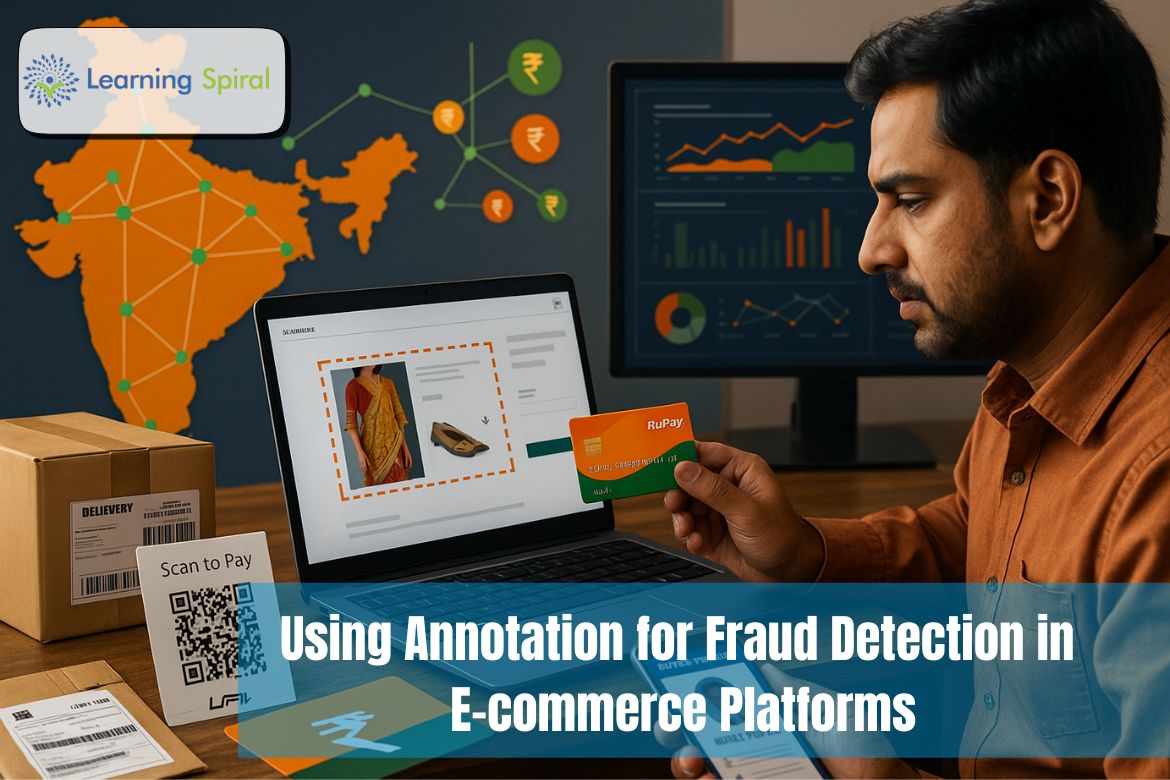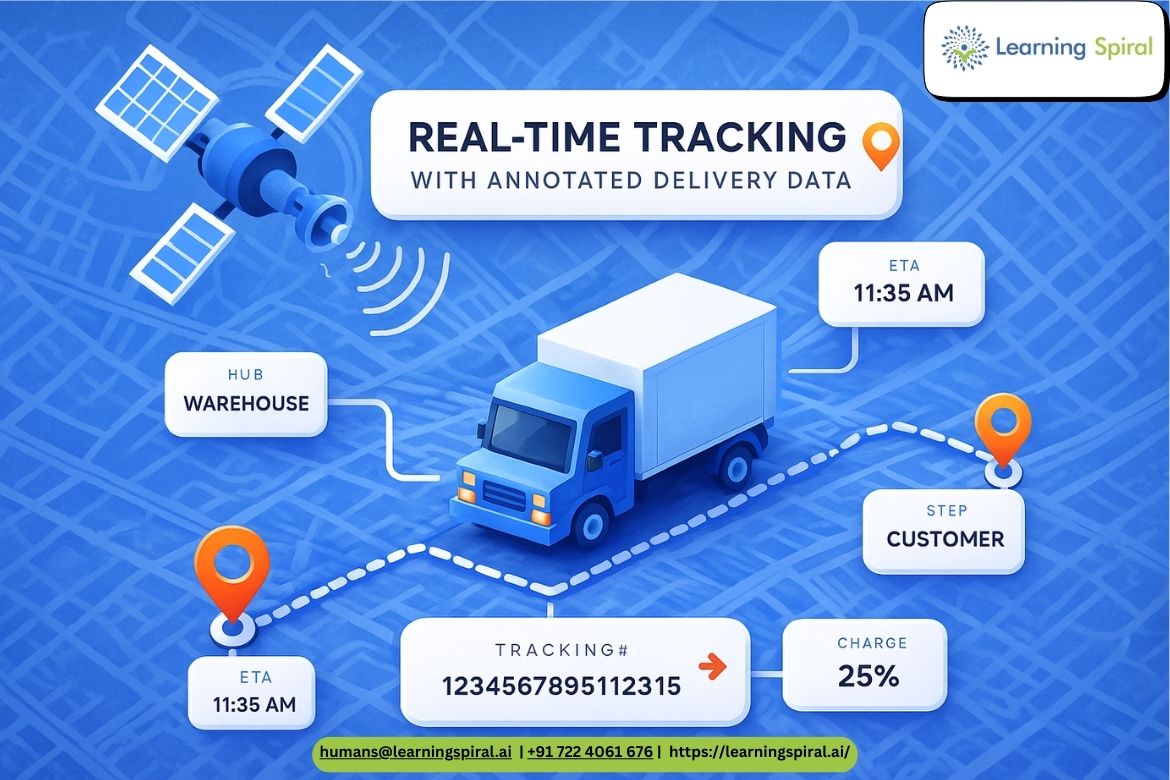Fraudsters exploit scale. Marketplaces, D2C stores, and social commerce channels handle millions of events—logins, product uploads, reviews, payments—every hour. The volume is too large and too nuanced for rules alone. Annotation bridges the gap: it turns heterogeneous data (images, text, and transactions) into ground-truth labels that teach models to spot fraudulent behavior early, precisely, and safely.
Below is a practical blueprint for universities, research labs, and AI-driven companies building or improving anti-fraud systems.
1) What “fraud annotation” actually means 
Fraud detection blends computer vision, NLP, and behavioral/graph modeling. Each discipline requires tailored labels:
-
Vision (images & video):
-
Object/class labels: counterfeit logos, prohibited items, manipulated invoices, mismatched packaging.
-
Region-level masks/boxes: altered price tags, tampered QR codes, doctored receipts (highlight stamp, signature, total).
-
Quality flags: blurred/stock images, watermark misuse, duplicate listing imagery.
-
-
NLP (text):
-
Document intent & content: suspicious buyer–seller chats, refund requests signaling “friendly fraud.”
-
Toxicity/spam: review farms, coupon-code sharing rings, phishing templates.
-
Entity & relation tags: merchant ID ↔ bank account ↔ device ID; product ↔ brand ↔ trademark claim.
-
Claim verification: invoice line-item totals vs. narrative text.
-
-
Behavioral/Graph (tabular + logs):
-
Event labels: chargeback, account takeover, card testing, promo abuse.
-
Link labels: shared devices, addresses, or payment instruments across multiple “new” accounts.
-
Sequence anomalies: login-reset-purchase sequences, high-velocity cart events.
-
A clean, unified labeling schema lets you train hybrid models—vision + NLP + graph—without brittle hand-coded rules.
2) Common fraud scenarios & suggested labels
-
Counterfeit or prohibited goods
-
Image classes: “counterfeit logo,” “brand misrepresentation,” “prohibited category.”
-
Text flags: brand-name typosquatting, “replica,” “mirror copy.”
-
Case label: counterfeit listing (yes/no), severity (low/medium/high).
-
-
Account takeover (ATO)
-
Sequence labels: atypical IP/device, geolocation jump, password reset + new address + large order.
-
Graph edges: account ↔ device ↔ payment reused across unrelated users.
-
Outcome label: ATO confirmed, ATO prevented, false alarm.
-
-
Payment & chargeback fraud
-
Transaction tags: card-testing patterns, AVS/CVV mismatches, micro-purchases bursts.
-
Outcome labels: friendly fraud, stolen card, legitimate dispute.
-
-
Promotion & returns abuse
-
Event labels: duplicate coupon redemption, excessive returns vs. category baseline.
-
Text labels: support chat intent (“item never arrived” template farms).
-
Outcome: abuse confirmed / suspected / cleared.
-
-
Seller collusion & review manipulation
-
Graph labels: review ring communities, cross-rating patterns, shared PII artifacts.
-
Text labels: templated 5-star reviews, sentiment drift after promo windows.
-
3) Data sources to prioritize (and how to annotate them)
-
Listing images & videos: annotate for counterfeit cues, packaging mismatches, and brand misuse.
-
Invoices/receipts: OCR + region masks for totals, taxes, barcodes, and stamps; label tampering artifacts (copy-paste edges, compression halos).
-
User-generated text: chats, claims, Q&A, reviews—intent and entity links to merchant/product.
-
Event logs: login, device, payment, shipping; labels for sequence anomalies.
-
Graph snapshots: nodes (users, devices, cards, addresses) and edges (re-use, temporal proximity).
Tip: Store rationales (brief annotator notes) for ambiguous examples. Rationale-augmented datasets speed up error analysis and model debugging.
4) Designing a fraud annotation schema
Keep it hierarchical and auditable:
-
Level 0 (binary): fraud / not fraud.
-
Level 1 (category): counterfeit, ATO, chargeback, promo abuse, collusion, other.
-
Level 2 (evidence features): “logo mismatch,” “geovelocity > X,” “receipt tampering,” “coupon duplication,” “device sharing.”
-
Severity/impact: low, medium, high (based on $ loss or policy risk).
-
Resolution status: confirmed, suspected, reversed, cleared.
-
Provenance: who labeled, when, tool version, verification chain.
Version your schema and freeze label definitions per training wave to maintain comparability across experiments.
5) Workflow & quality control that actually scales
-
Golden set creation: SMEs define 500–2,000 archetypal cases spanning all classes.
-
Calibrated training: every annotator passes agreement thresholds on the golden set before production.
-
Dual pass + arbitration: two independent labels plus SME tie-breakers for high-risk classes.
-
Dynamic sampling: oversample rare but costly fraud types; undersample easy negatives to control class imbalance.
-
Programmatic pre-labels: use heuristics or weak models (OCR totals, device clustering) to pre-tag; humans correct—boosting throughput.
-
Metrics:
-
Inter-annotator agreement (Gwet’s AC1 / Krippendorff’s α).
-
Error taxonomy (missed fraud, overflagging, wrong category).
-
Drift watch (label distribution by week, region, category).
-
-
Audit trail: store screenshots, redactions, and rationale text per decision.
Learning Spiral AI operates this workflow end-to-end with secure tooling, reviewer ladders, and continuous calibration, so research and platform teams can focus on modeling and product impact.
6) Model approaches that benefit from rich labels
-
Vision: CNN/ViT models for counterfeit cues; multi-task heads predict category + severity + tampering regions.
-
NLP: LLM-based classifiers with domain adapters; sequence models for support dialogs and claims; NER for entities (merchant, order, card BIN).
-
Graphs: GNNs (GraphSAGE/GAT) for device–account–payment networks; anomaly detection over temporal motifs.
-
Multimodal fusion: late-fusion ensembles or cross-modal attention (image + description + event stream).
-
Active learning: uncertainty sampling on borderline cases; human-in-the-loop to refresh hard negatives.
7) Privacy, compliance, and risk controls
Fraud datasets often contain PII and financial data. Bake in safety from day one:
-
Data minimization & masking: redact PAN, card digits, phone numbers; tokenize IDs.
-
Access controls: role-based workspaces; VDI or zero-copy labeling.
-
Geo-fencing & residency: store and process data within approved regions.
-
Policy alignment: PCI-DSS for payment traces; GDPR/DPDP for subject rights; SOC 2 for process controls.
-
Red-team tests: inject synthetic PII to confirm pipelines never leak.
8) Measuring business impact
Tie model outputs to financial outcomes and customer experience:
-
Precision/recall per fraud type and dollar-weighted cost.
-
False-positive burden on good users (auto-unlock pathways).
-
Time-to-decision for high-risk events.
-
Uplift vs. rules-only baselines in A/B or backtests.
-
Analyst productivity (cases resolved per hour with AI triage).
9) Build vs. partner
Building internal labeling ops works for narrow scopes. At marketplace scale, you need coverage, speed, and governance. A specialist partner like Learning Spiral AI provides:
-
Domain-trained reviewers across vision/NLP/graph tasks.
-
Production-grade QA (dual-pass, arbitration, and gold maintenance).
-
Secure infrastructure, compliance artifacts, and custom redaction pipelines.
-
Flexible engagement: pilot golden sets, surge capacity, or fully managed programs.
10) Quick start checklist (90 days)
-
Define fraud taxonomy & evidence features; sample 10k historic cases.
-
Create a 1k-case golden set with SME notes.
-
Stand up secure labeling with dual-pass QA and audits.
-
Launch v1 models (vision/NLP/graph) + rules ensemble.
-
Insert active-learning loop; refresh 5–10% labels weekly.
-
Track dollar-weighted KPIs and analyst workload.
-
Expand to regional playbooks (policy and language variants).
Conclusion & CTA
Fraud never sleeps—but annotated, multimodal data gives your models the context they need to act fast and fairly. Whether you are a research group prototyping new architectures or an e-commerce platform hardening production defenses, disciplined annotation is the foundation.
Want production-ready, secure fraud datasets?
Connect with Learning Spiral AI to design your schema, build gold standards, and scale high-quality labels for vision, NLP, and graph models.






